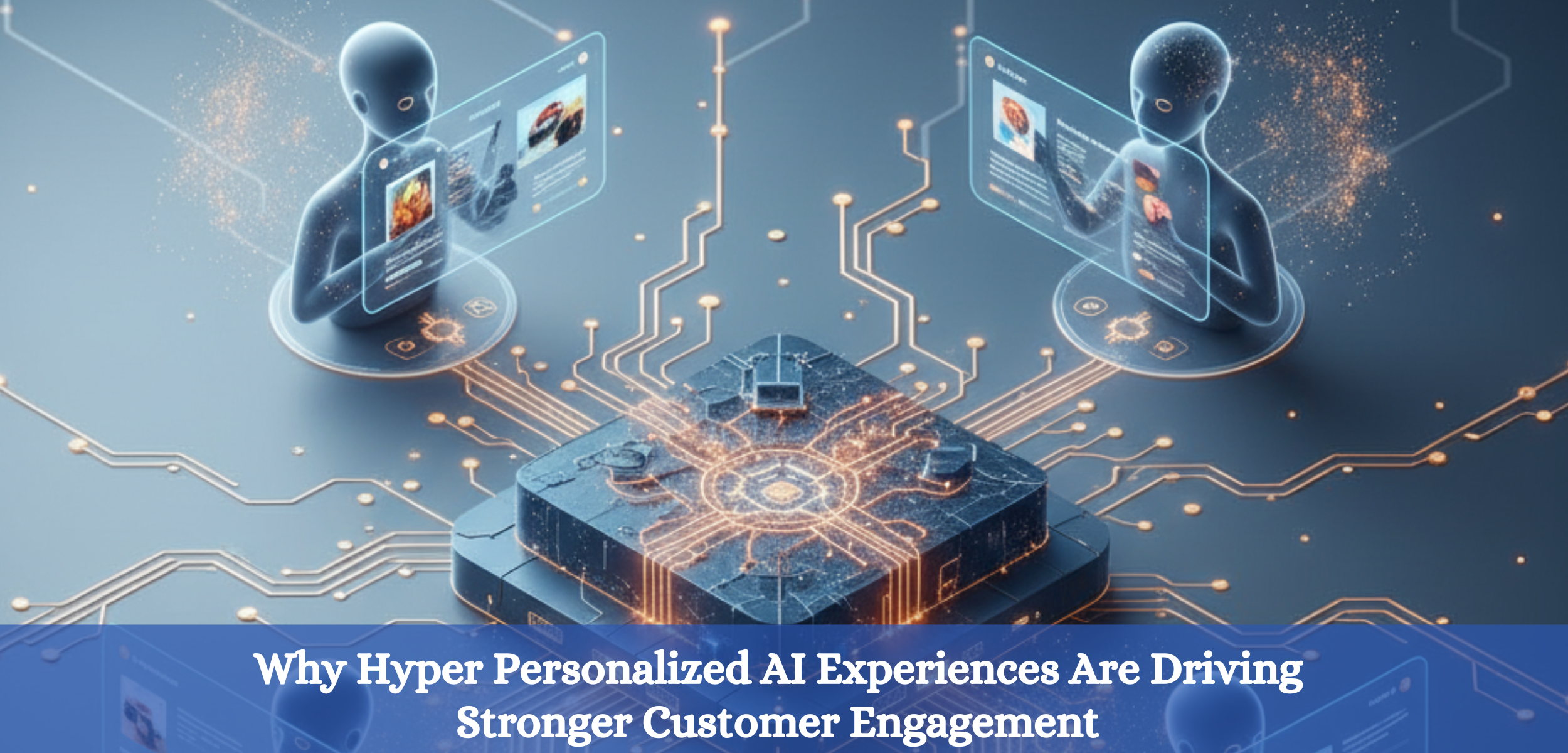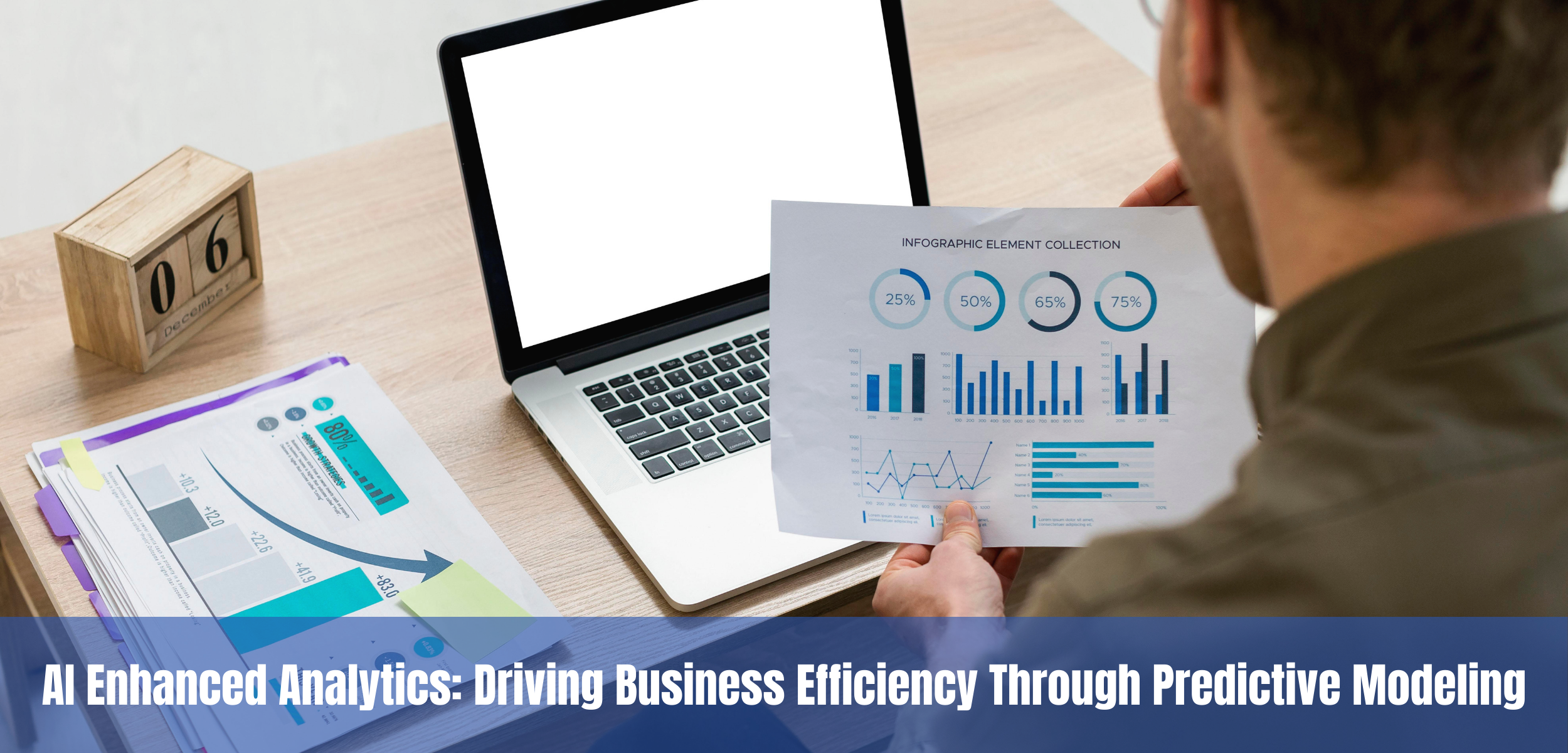Customers today navigate digital ecosystems that are fast, fragmented, and filled with options. Their expectations have evolved just as quickly: they want brands to understand them, adapt to them, and help them at the exact moment they need it without being asked. Hyper personalized AI experiences are how companies deliver on that expectation.
Hyper personalization is not about showing someone a product they viewed yesterday or adding a name to an email. It is about using real-time data, predictive intelligence, and automated decisioning to optimize every interaction, for every user, across every channel. And when done well, it transforms engagement from a marketing function into an always-on value engine.
This article unpacks that transformation end to end how hyper personalization works, why it drives engagement, what technical foundations make it scalable, and how organizations can adopt it responsibly and effectively.
Hyper Personalization: Beyond Segments and Campaigns

Most personalization still relies on rules and broad customer segments. Hyper personalization takes a fundamentally different approach.
What makes it “hyper”?
- Individual-level decisions: No segments, no buckets every action is tailored to a single customer.
- Real-time context: Decisions adapt as users browse, click, pause, or switch channels.
- Predictive modeling: AI predicts what users will need next, not just what they did last.
- Prescriptive decisioning: Systems choose the next best action (NBX) for the customer and execute it instantly.
Hyper personalization isn’t reactive. It’s anticipatory. It treats every moment with a customer as an opportunity to improve relevance, reduce friction, or create value and that’s why engagement improves naturally.
Why Hyper Personalization Drives Stronger Customer Engagement

At its core, engagement is a function of relevance, timing, and effort. Hyper personalized systems optimize all three.
Higher Relevance
When recommendations, messages, and support paths align with a user’s intent, engagement follows. Customers open what matters and ignore the rest.
Better Timing
Real-time intelligence makes timing precise, nudging a user right when they pause on a product, struggle with a step, or reach a decision boundary.
Reduced Customer Effort
Proactive experiences like surfacing the right help or the right product remove friction that normally kills engagement.
Trust Through Consistency
Because AI continuously learns and aligns interactions across channels, customers experience a coherent journey instead of a fragmented one.
Together, these benefits compound: more engagement → more data → better predictions → even more engagement.
The Technical Engine Behind Hyper Personalization

Behind every hyper-personalized experience is a coordinated technical stack that can observe customer behavior in real time, interpret intent, and deliver the next best action within milliseconds. This engine has four essential layers: data ingestion, unified profiles, predictive intelligence, and real-time decisioning.
- Real-Time Data Capture
Hyper personalization begins with high-quality, well-structured signals. Modern systems collect clickstream events, session data, purchases, search terms, support interactions, and contextual details (device, timing, location).
Events are streamed through platforms like Kafka or Kinesis so the system can process activity as it happens, not minutes or hours later. Clean schemas, consistent identifiers, and timestamp integrity ensure downstream models work with reliable, lossless data. - Unified Customer Profiles
To personalize accurately, the system needs a continuously updated 360° view of each customer. This profile blends historical data (orders, preferences, demographics) with real-time behavior (recent views, carts, drop-offs).
Modern architectures combine two storage layers:
- Offline stores (Snowflake/BigQuery): large-scale history and training data
- Online feature stores (Redis/Feast): sub-second feature lookups for model inference.
This dual structure lets models access fresh context at the moment a decision is needed.
- Predictive and Generative Intelligence
Hyper personalization relies on multiple model types working together:
- Propensity models that predict likelihood to click, buy, churn, or respond
- Sequence models that interpret short-term intent based on recent actions
- Ranking models that order products, offers, or messages
- Generative AI that adapts content copy, recommendations, or support messages based on retrieved customer context
Each model is trained with time-aware validation to avoid leakage and monitored continuously for drift.
- Real-Time Decisioning
This is the “brain” of the system. It evaluates all possible actions for example, a discount, tutorial nudge, cross-sell, or help prompt and selects the single best option.
Decisioning engines weigh model scores against business rules, contact policies, and user consent, producing a response in <200–300ms. If models fail or APIs slow down, the system gracefully falls back to cached or simpler recommendations.
High-Value Use Cases Across Industries

Hyper personalization becomes especially powerful when applied to specific, recurring customer journeys.
Retail & Ecommerce
- Dynamic product recommendations based on session behavior
- Personalized bundles or pricing based on purchase likelihood
- Real-time cart rescue optimized for margin and probability, not guesswork
Financial Services
- Personalized next-best financial actions (save, invest, budget)
- Fraud detection combined with personalized guidance
- Tailored retention or renewal interventions
SaaS & Digital Products
- Onboarding experiences that adapt to a user’s skill level
- Feature nudges based on usage patterns and predicted needs
- Churn prediction with proactive retention steps
Healthcare
- Personalized appointment reminders based on history and risk
- Tailored educational pathways based on health literacy
- Proactive care recommendations based on behavioral patterns
Across all these cases, hyper personalization consistently drives engagement because users feel understood not targeted.
Challenges Organizations Must Solve

Hyper personalization produces results, but only when built responsibly.
Data Fragmentation
Scattered systems produce inconsistent experiences.
A unified customer layer is non-negotiable.
Operational Siloes
Marketing, product, and support teams all interact with the same customer. Without coordination, AI-driven experiences become disjointed.
Over personalization Risks
Without guardrails, personalization can feel intrusive.
Consent, frequency control, and clear transparency matter.
Technical Debt
Legacy systems often can’t handle real-time data or decisions.
A phased modernization approach is essential.
How to Build Hyper Personalized Capabilities the Right Way
A practical blueprint:

Step 1: Start With a Single, High-Value Journey
Examples: onboarding, cart abandonment, subscription renewal, churn prevention.
Step 2: Activate Real-Time Signals
Even simple events can drastically increase relevance when used immediately.
Step 3: Build or Upgrade the Prediction Layer
A single well-performing model often outperforms dozens of rules.
Step 4: Implement Decisioning
Use a lightweight NBX engine that can grow over time.
Step 5: Layer in Generative Personalization
Guided, brand-safe GenAI adds human-like communication without sacrificing scale.
Step 6: Expand, Measure, and Optimize
This creates a flywheel: better engagement → better data → better predictions → better experiences.
The Future of Hyper Personalization
Three shifts are already underway:
AI Agents Running Entire Customer Journeys
Agents will soon monitor real-time signals, choose NBX actions, rewrite content, and escalate when needed autonomously.
Multimodal Personalization
AI will combine voice, text, image, and behavior to offer richer, more intuitive personalization.
Emotion- and Intent-Aware Experiences
Experiences will adapt to user mood, urgency, and context in ways that feel distinctly human.
Hyper personalization is not an optimization tactic; it’s a foundational capability shaping the future of customer engagement.
Conclusion
Hyper personalized AI experiences are reshaping how companies connect with customers. By predicting needs, adapting in real time, and personalizing journeys across channels, businesses can create engagement that is not only stronger but more meaningful. Customers feel understood, supported, and valued, and that creates lasting loyalty.
Organizations that adopt hyper personalization now gain an advantage that compounds with every interaction.
Build Your “Intelligent Engagement Core” with Evermethod Inc
If you're ready to evolve from disconnected touchpoints to a continuously learning, real-time engagement engine, Evermethod Inc can help you build the technical and operational foundation behind it.
We don’t deliver generic roadmaps.
We architect and deploy what matters:
- Real-time customer signals
- Production-grade prediction models
- A flexible decision engine for NBX
- GenAI experiences that stay brand-safe
- Governance, measurement, and optimization loops
Let’s build your Intelligent Engagement Core, the system that powers revenue, retention, and deeper relationships across every customer moment.
Reach out to Evermethod Inc to start turning hyper personalization into a measurable competitive advantage.
Get the latest!
Get actionable strategies to empower your business and market domination
.png?width=882&height=158&name=882x158%20(1).png)

.png/preview.png?t=1721195409615)

%2013.png)


